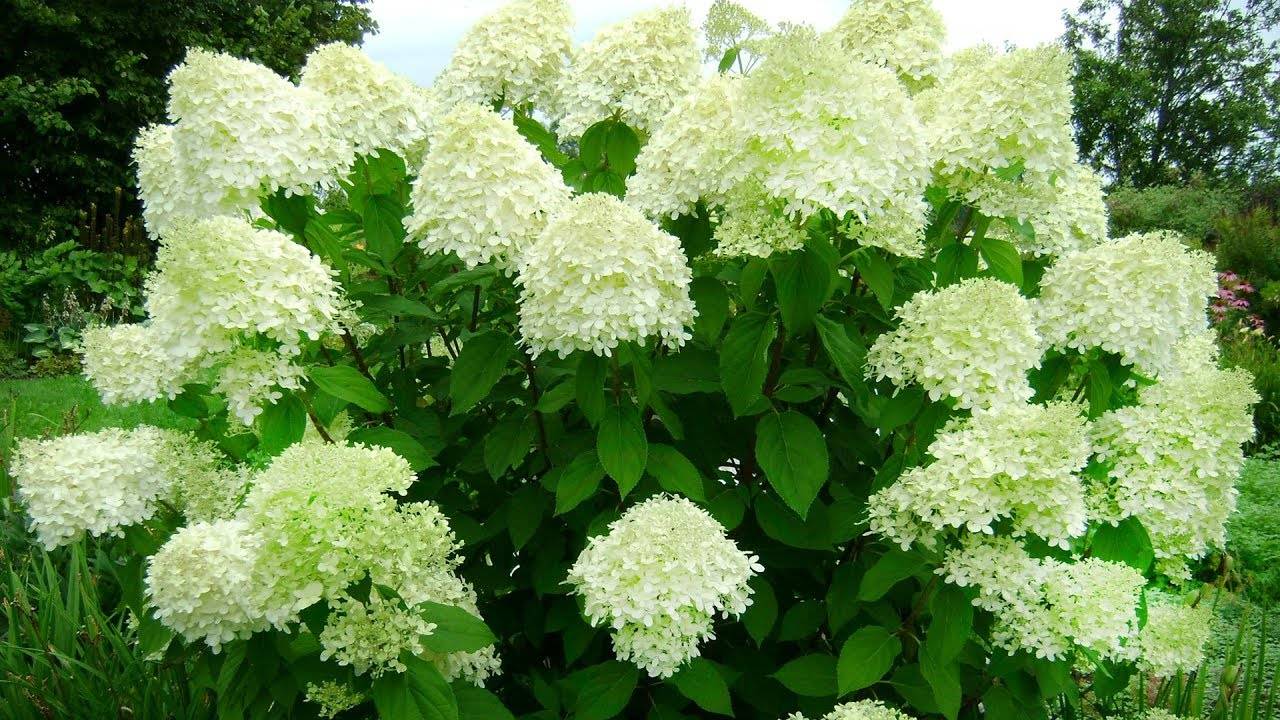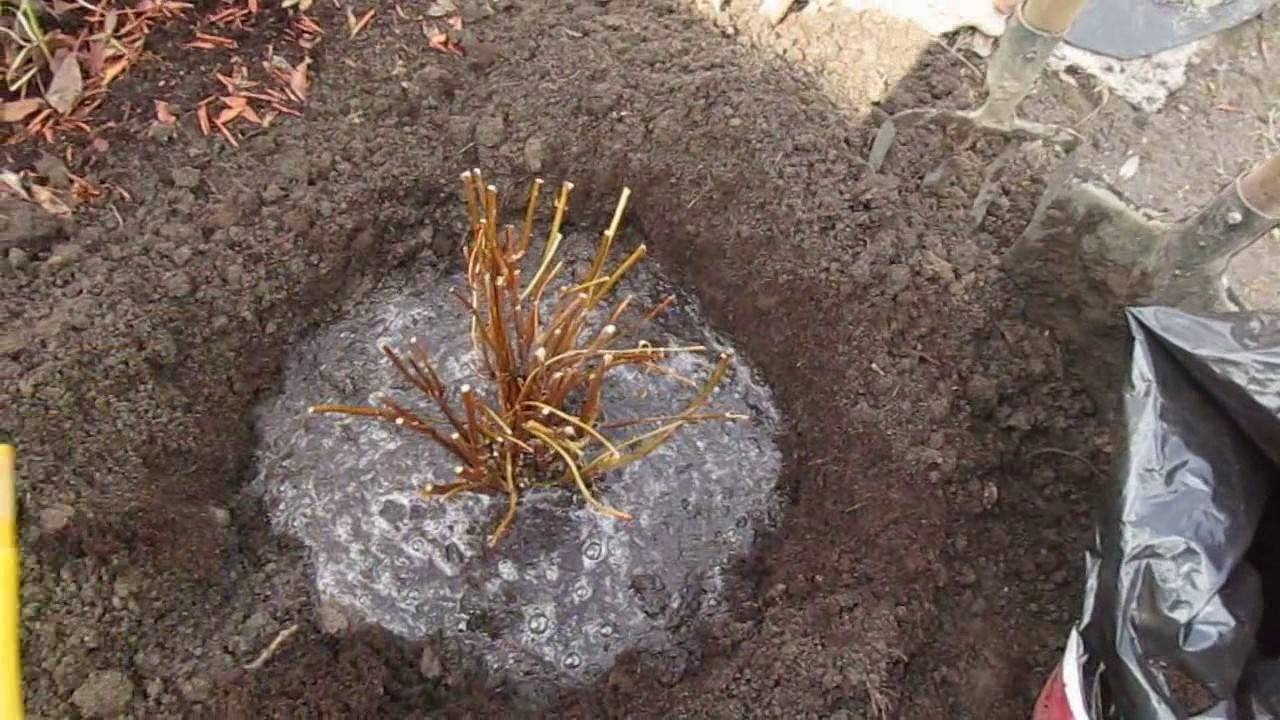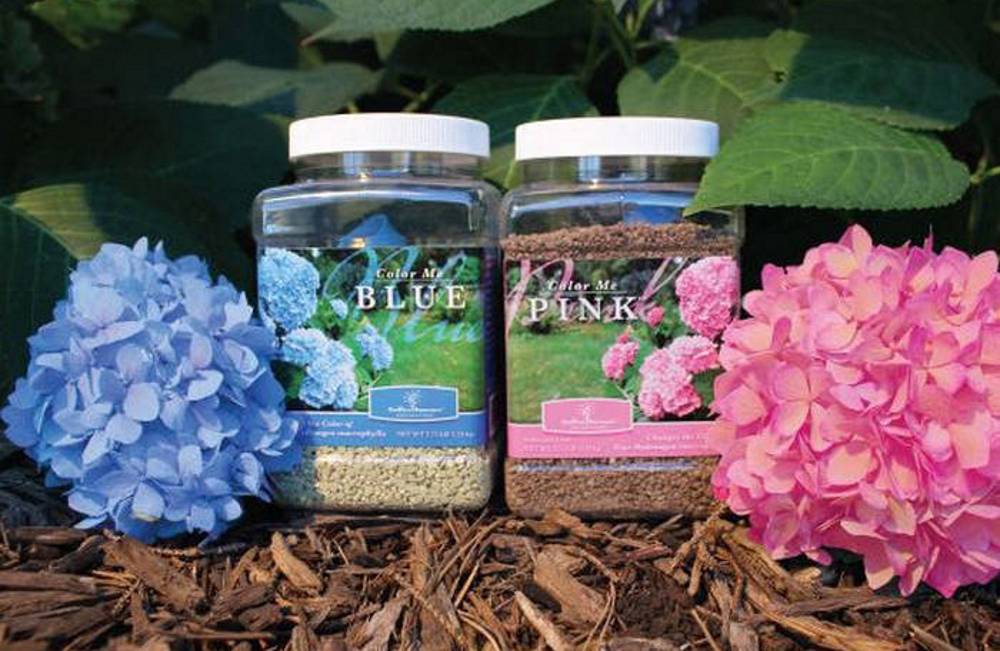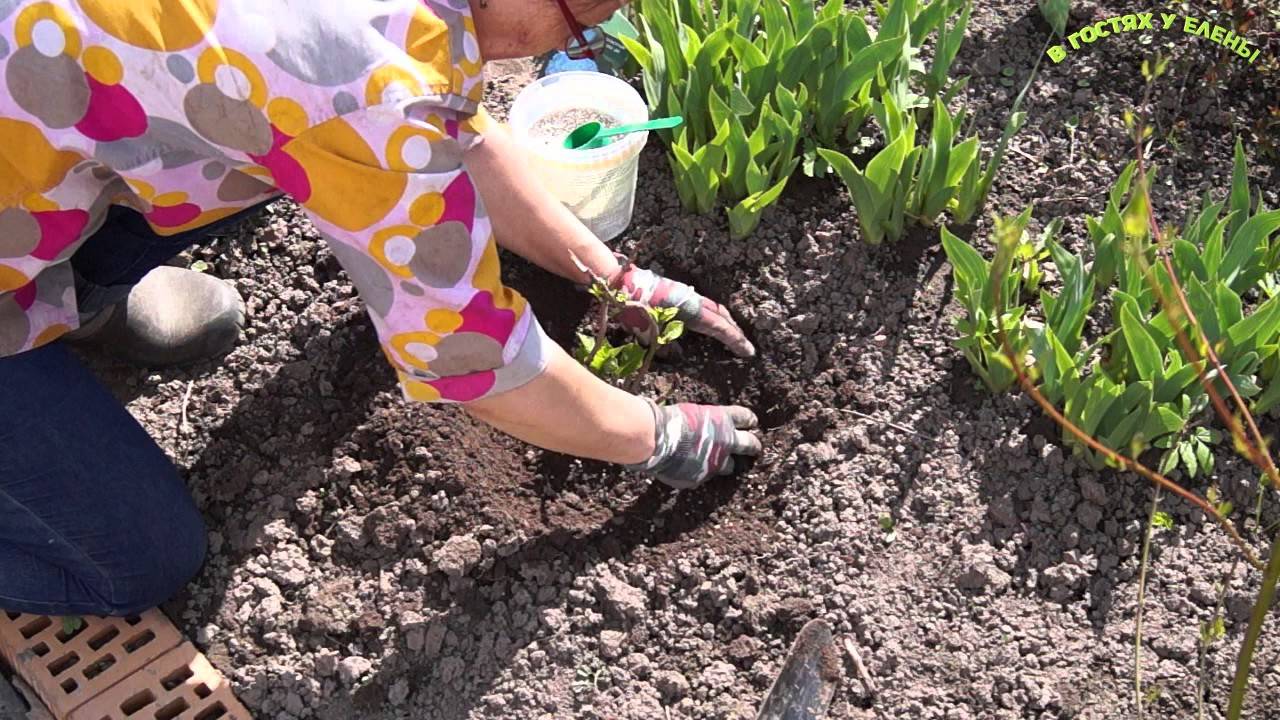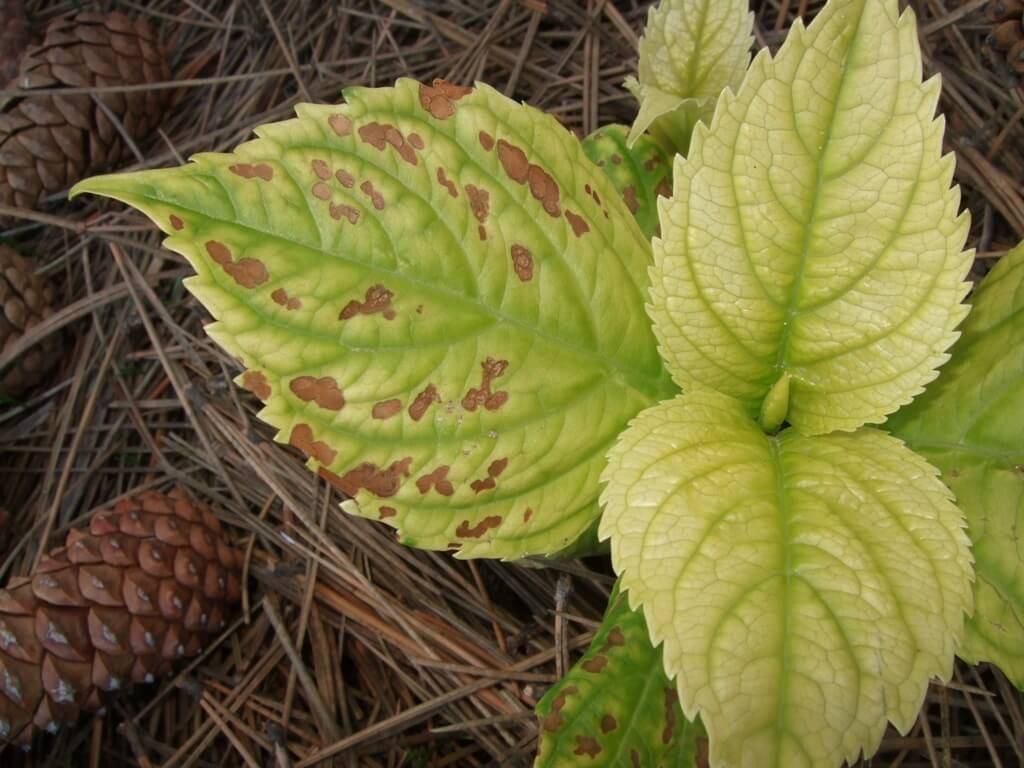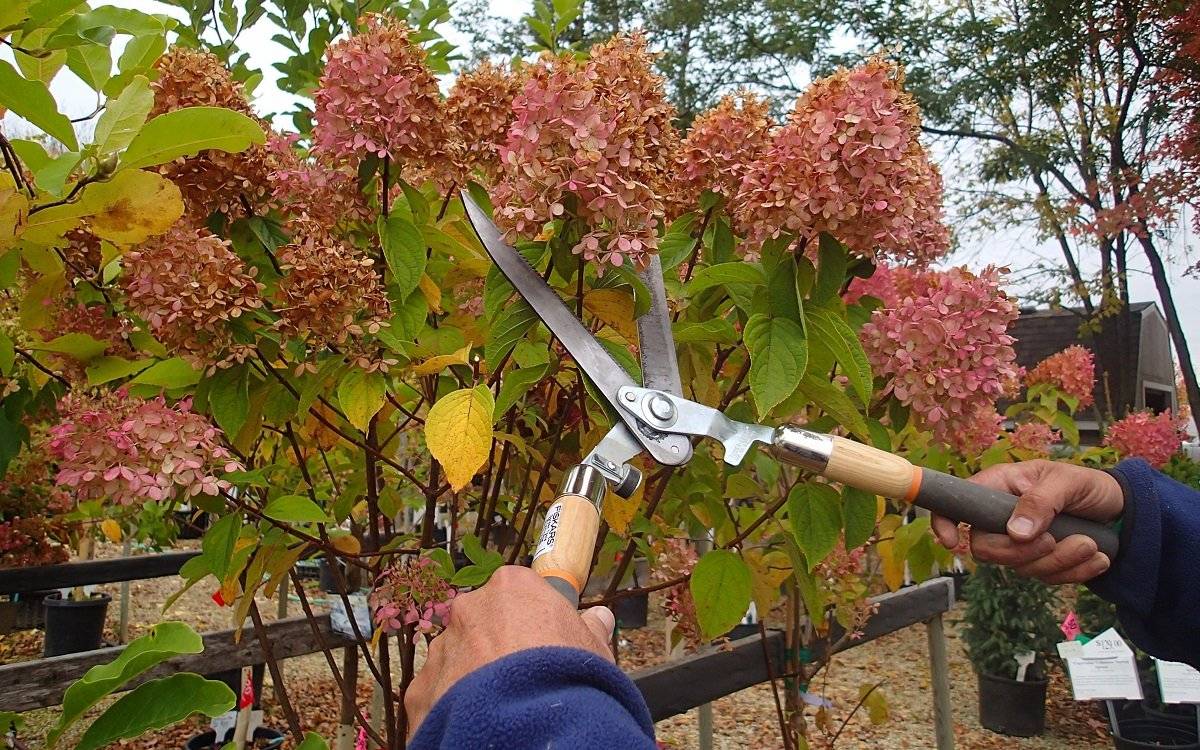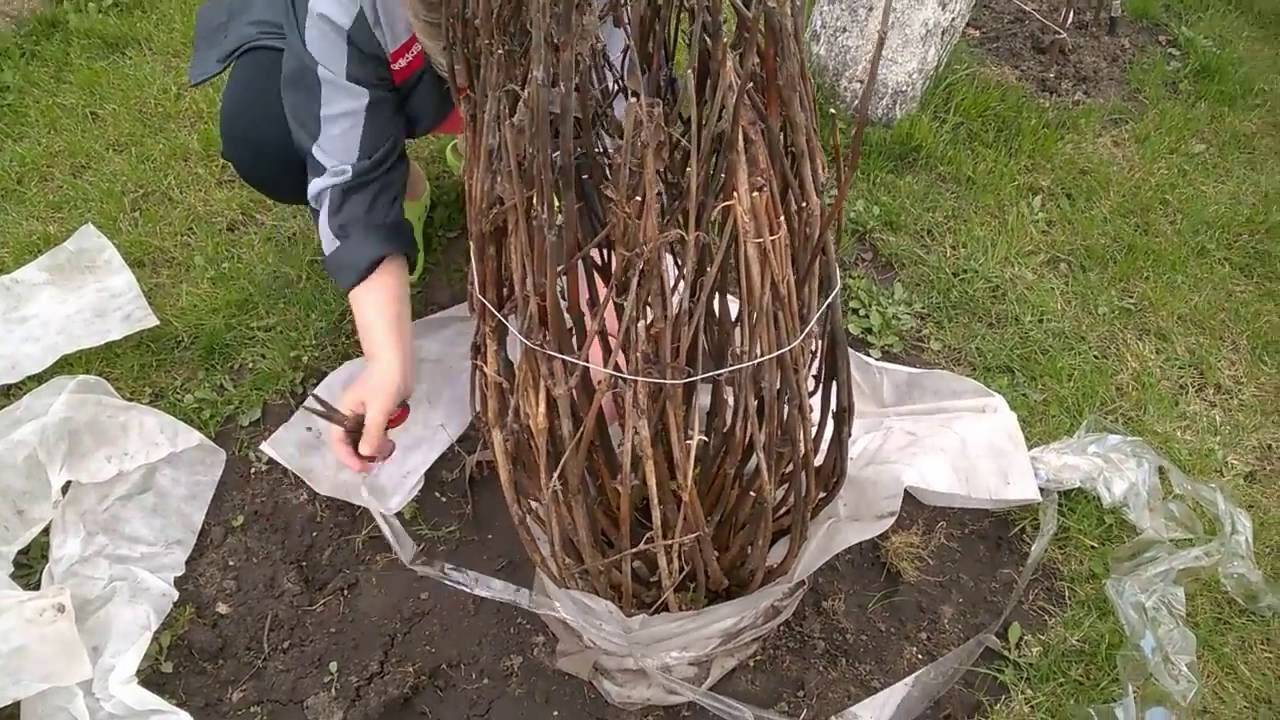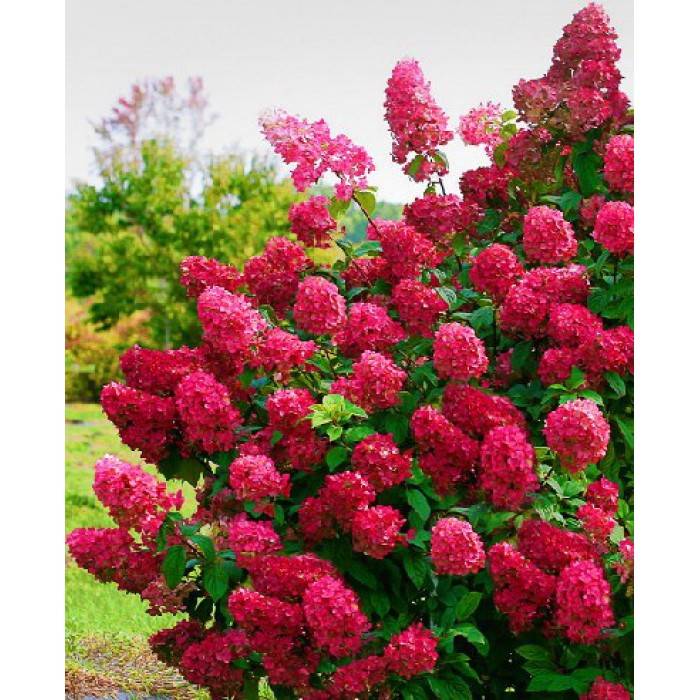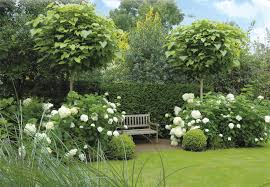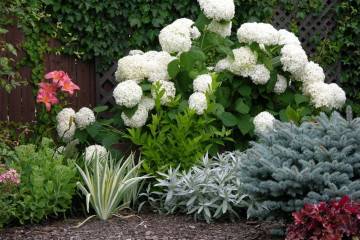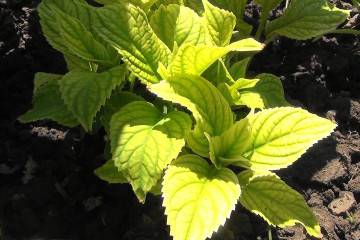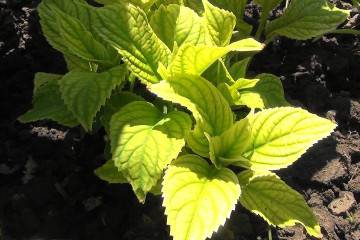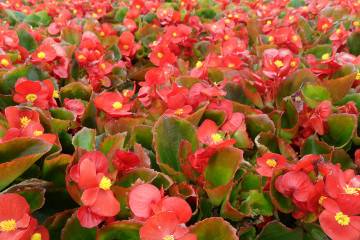Planting hydrangeas outdoors in spring
Content:
Hydrangea is a chic representative of home and garden flora. It differs from other plants with its multi-colored inflorescence. Hydrangea is a long flowering shrub, so any gardener can choose a suitable variety that will highlight the beauty and elegance of the garden.
Planting hydrangeas outdoors in spring
The optimal time for planting in the Moscow region and in other temperate territories is in the spring in early May, and in the fall - in early September. In the southern regions, they are planted in autumn and spring, in a more severe climate - in spring, so that the culture does not freeze.
Hydrangea prefers warm and fertile, moist, acidic soil rich in humus. Planting panicle hydrangea in open ground is carried out in the spring in an open place, where there is enough sun in the morning. If planted in partial shade, the hydrangea will bloom later. It is preferable to choose a site on the east side of the garden.
When planting, it is necessary to take into account the distance between the seedlings:
- large-leaved - 120-160 cm;
- paniculate - 40-240 cm.
The depth of the hole should be 36-45 cm, and the width should be 51-65 cm. If the distance is not observed, the plant will not be able to properly develop the root system.
A prepared mixture consisting of humus, peat, potassium fertilizer is poured into each hole. After planting in open ground, the soil should be mulched with peat or humus. Soft rainwater is used for irrigation. Watering is carried out 2 times a week. Water for irrigation should settle for 3 days.
Hydrangea froze in spring: what to do?
Spring frosts are dangerous for culture. Early removal of the cover can lead to unpleasant consequences - kidneys are damaged. During frosts, the bush is covered with a non-woven material to preserve the plant.
If the branches are frozen, then do not be upset. It is necessary to carefully trim the upper part of the damaged branches. In the event that the plant is very frozen, then flowering is possible only the next year. It is best to avoid such situations so that the plant does not die.
Top dressing of hydrangea paniculate and tree-like: in spring
Top dressing is the main source of useful and nutritious substances. They saturate the soil with chemical elements necessary for active growth and development of the root system. If you systematically feed the shrub, then you can expect abundant flowering until late autumn. Fertilizers are applied in several phases:
- the first - in early June, so that new shoots grow;
- the second - in June, for an abundance of buds;
- the third - during flowering (for laying new buds).
Top dressing of hydrangeas in paniculate spring is carried out with complex fertilizers with an increased nitrogen content (ammonium sulfate, ammonium nitrate, urea). Before fertilizing, the soil is well moistened.
For panicle hydrangea, so that the deciduous mass grows, a mixture of ammonium sulfate and urea is used.
Hydrangea and dung
In the absence of chemicals, slurry is used for feeding.What kind of manure will be used is up to the gardener.
Cow or horse manure must be diluted with water and mixed thoroughly. The finished top dressing is diluted with water 1:10. Each bush requires 5 liters of fertilizer.
Preparing for the cold: caring for hydrangea outdoors
After the hydrangea blooms, it is time to prepare for the cold weather. It is necessary to make an autumn dressing, which will help the shrub to leave for the winter. The applied fertilizers will strengthen the condition of the hydrangea and lay vegetative and flower buds for future growth and flowering next year. Potassium-phosphorus fertilizers are applied to the soil. The amount of watering decreases, and stops on rainy days. If there are hot days in September, then it is imperative to water the bush so that the plant receives the necessary moisture.
An important measure for the care of a crop is pest and disease control. Waterlogged soil, water hardness, dry or rainy weather can admit the disease. Among the diseases, the following should be highlighted:
- powdery mildew;
- gray rot;
- chlorosis;
- rust.
To combat them, special drugs or folk remedies are used. The shrub is susceptible to invasion by insects such as snails, slugs, leafworms and other pests. Special means are used to destroy the inhabitants. Disease prevention and timely pest control will ensure the active growth of the shrub.
Pruning and sheltering for the winter
Most varieties need shelter for the winter, although the culture is considered frost-hardy. The main requirement is that the material for the shelter should not allow air to pass through, otherwise the shoots of the plant can rot, which will lead to death. For shelter, you can use foliage, burlap, roofing felt, spruce branches.
There are several ways to hide:
- hydrangea branches are neatly laid on spruce branches and pressed to the ground with the help of stones. Then, from above, the bush is covered with foliage and covered with burlap;
- metal staples are used, with which the branches are fixed along the diameter of the bush. Spruce branches are laid out on the branches, covered with burlap and sprinkled with sawdust abundantly. Roofing material is laid on top, which reliably protects the plant;
- you can simply close it with spruce branches or wrap it in burlap.
Any method of shelter is able to protect the hydrangea from frost, the main thing is to remove the shelter in time. So that the plant pleases with its beautiful flowering.
Pruning is also a necessary part of crop maintenance. Pruning is done in the spring, no later than April. When the buds appear on the hydrangea, it's time for pruning. To form powerful shoots, you can prune the bush abundantly. Older bushes are pruned harder than young plants. After pruning, the hydrangea is fertilized with humus and compost to accelerate the formation of shoots. You can apply mineral fertilizers, which will have a beneficial effect on the crop.
Choosing a place and soil for planting
Hydrangea grows favorably in sunny places. It is better to choose a place where the sun warms up in the morning. Avoid planting hydrangeas next to large garden trees. Such trees will pick up moisture and create shade, and without a moist environment, the bush will die. The site must be closed from drafts. It is forbidden to plant near the roofs of houses and buildings, there is a possibility of snow and frost on the plant. A wonderful place - hills and hills with a high standing of groundwater on the site.
The main requirements for the soil:
- acidity - the higher its level, the richer the flowering will be;
- airtightness - hydrangea loves loose soil;
- moisture - the soil should not be allowed to dry out (mulching is used).
The nutritious substrate will ensure excellent growth and abundant flowering. The flowering time of the plant is early June and until late autumn. If the shrub is planted in neutral soil, it will bloom with beige or cream flowers. The alkaline soil is dominated by pink and lilac flowers. In acidic soil, the flowers turn bright blue. The wrong place and soil are the reasons for the non-flowering of the shrub. After the age of six, the bushes are renewed, as the culture ceases to bloom.
How to plant a plant?
When planting hydrangeas, it is important not only to choose the right place and soil, but also to observe every step of planting.
Plant a hydrangea as a seedling, but you can grow a seedling from seeds. Seed planting is carried out in the fall, but this method takes more time. After planting with seeds, a bush transplant is required.
Landing pit and soil
For young seedlings, the size of the planting pit should be 40x40, for perennial shrubs - 50x50. Each hole is filled with a mixture of soil and fertilizers rich in minerals. In young seedlings, elongated roots are cut off, and shoots and dry inflorescences are pruned (if the bush is old). A hill is formed from the soil, on which the seedling is located, and the roots are straightened. The hole is covered with the remnants of the soil, without covering the root collar of the bush. Abundant watering is carried out, the soil is rammed and mulched with sawdust or tree bark.
Panicle hydrangea for Siberia
In Siberian climatic conditions, panicle hydrangea is grown, which is not afraid of frost. The best frost-resistant varieties of panicle hydrangea for growing in Siberia and the Urals are:
- Phantom - has large inflorescences and variability of shade;
- Silver Dollar - white flowers, smoothly changing to pink;
- Pinky Winky - shrub height up to 2.5 m, white flowers, change color by the end of the season;
- Vanille Fraise - changes the color of flowers;
- Lime Light - flowers are greenish in color, by the end of flowering they become lemon in color.
In Siberia, it is necessary to choose viable seedlings. Shoots should not be long or damaged. For planting, an illuminated area and a weakly acidic environment are selected. The composition of the soil includes leaves, sand, turf. Plants are planted in late May or early June when the soil warms up.
Panicle hydrangea is an unpretentious crop, but in conditions of growth in Siberia, certain features should be taken into account. Timely circumcision ensures the full formation of the culture. In the fall, the inflorescences that have faded are cut off. The main shoots are cut off, and 3 buds are left on the side ones. To rejuvenate old bushes, branches are cut to hemp. Regular watering, mulching and fertilizing will ensure abundant flowering.
In winter, the temperature in Siberia drops dramatically, so the hydrangea must be covered. If the roots are not insulated, the plant will die. To do this, use rotted manure, dry foliage or peat.
It is quite problematic to grow hydrangea in Siberian climatic conditions. In the cold climate of Siberia, the plant needs comprehensive and proper care.
Compositions with hydrangea in landscape design
Hydrangea is a popular plant used in landscaping. Bright flowers and graceful ornamental forms can enliven any area. Panicle hydrangea looks amazing not only in a single planting, but also in a group design. The spreading crowns of hydrangeas will decorate the garden area as a hedge. The bush must be properly shaped as a decoration. So that it attracts attention not only during abundant flowering, but also in the spring as part of the decor.
A hydrangea bush, planted in the central part of the green lawn, will add bright colors to the design of the garden area.If there is an artificial reservoir on the site, then a hydrangea planted on the shore will be amazingly reflected in the water.
For group planting, hydrangea bushes are planted in different sizes and varieties. The bright colors of the shrubs will complement each other beautifully. With the help of shrubs of different sizes, you can create a tiered composition.
Treelike hydrangea lends itself well to formation. These varieties are mainly used in single plantings.
Hydrangea is successfully combined with ferns, geraniums, cereals, lilacs, ivy and other plants.
Hydrangea and hosta
A wonderful duet - hydrangea and hosta, will add brightness and uniqueness to any garden. There are a huge number of hosta varieties. The host has been blooming for several years. It is unpretentious and grows actively in any area. The root foliage of the plant resembles an air cushion, which has many shapes and colors. Varieties with light-colored or gray leaves will look more expressive.
Hydrangea garden
Hydrangea is popular with many gardeners for its decorative qualities. Using various varieties, you can beautifully decorate a garden plot. By experimenting with different shades of the plant, you can create a masterpiece that will captivate you with its unique and beautiful look. An elegant hydrangea will look majestic at the front door. For compact varieties, a good place is the perimeter of the lawn or the area along the garden paths. Tall varieties can be planted along the fence.
If a gazebo is installed on the site, then the hydrangea planted around the entire perimeter will add romance.
Hydrangeas are valued by gardeners for their variety of shapes, a huge palette of colors, unpretentiousness and abundant flowering. With proper care, the plant grows effectively and pleases with its gorgeous flowers.
